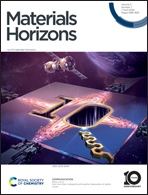Novel magneto-electrocatalyst Cr2CO2-MXene for boosting nitrogen reduction to ammonia
Abstract
Ammonia (NH3) plays important roles in chemistry, the environment, and energy; however, the synthesis of NH3 relies heavily on the Haber–Bosch process, causing serious environmental pollution and energy consumption. A clean and effective strategy for the synthesis of NH3 involves nitrogen (N2) being transformed to ammonia (NH3) using electrocatalysis. Adjusting the magnetism of electrocatalysts may improve their performance, and therefore, four magnetic states, nonmagnetic (NM), ferromagnetic (FM), interlayer antiferromagnetic (Inter-AFM), and intra-layer antiferromagnetic (Intra-AFM) Cr2CO2-MXene were designed to explore magnetoelectrocatalysis performance using well-defined density functional theory (DFT) calculations in this study. Upon comparing the nitrogen reduction limiting potentials of N2 molecules on the surface of the four different magnetic states in Cr2CO2-MXene, and the selectivity calculations of the hydrogen evolution reaction (HER) and nitrogen reduction reaction (NRR), the Inter-AFM Cr2CO2-MXene is shown to be a better NRR electrocatalyst than the other three cases. This study paves way to unravel the mystery of the spin-catalytic mechanism and will lay a solid foundation for eNRR electrocatalysts with magnetic materials for environmental and energy applications.



 Please wait while we load your content...
Please wait while we load your content...